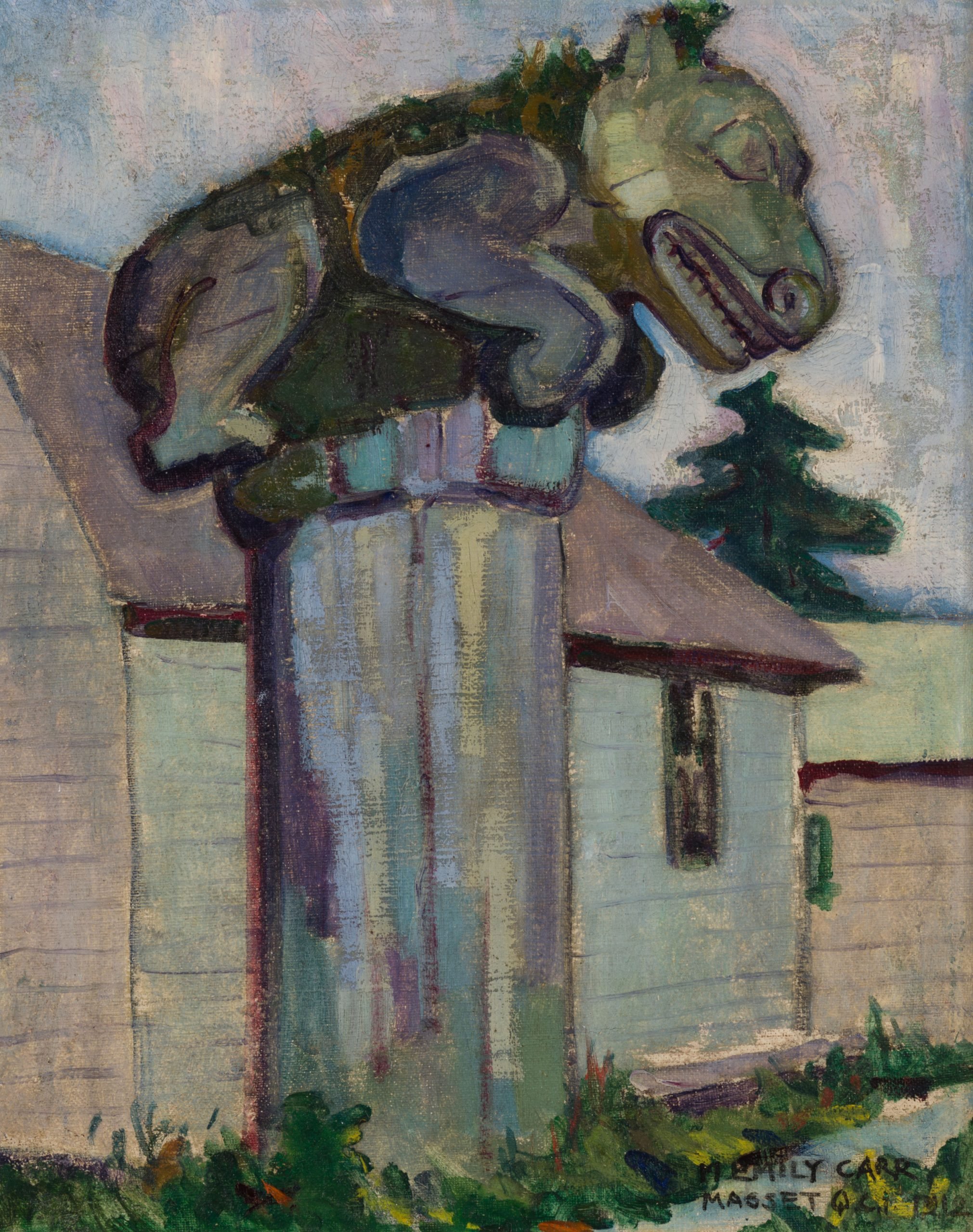
Every barn sale harbors some hidden gems for the eagle eyed shopper, but when New York-based art dealer Allen Treibitz visited one such event in the Hamptons earlier this year, he unknowingly hit the jackpot. He found himself strangely drawn towards a mysterious painting depicting a carved grizzly bear perched atop a totem pole and gladly paid $50 to take it home.
A seasoned art market expert, Treibitz was naturally inquisitive about the painting’s provenance. Though he was unfamiliar with the name signed on the canvas, Emily Carr, when he looked her up he realized she was, to put it mildly, a pretty big name in early 20th century Canadian art.
Safe in the knowledge he had something special on his hands, Treibitz made contact with Heffel Fine Art Auction House in Canada, leaving its president David Heffel stunned. “There was no doubt in my mind that this was an exciting Cinderella discovery,” he told The Canadian Press.
The rediscovered masterpiece will now hit the auction block at Heffel in Toronto on November 20 and is expected to fetch CAD $100,000–$200,000 ($75,000–$150,000). “The fact that it was found and that it is back to its home place is very important” Heffel added.
Born in British Columbia in 1871, Emily Carr had a traditional English upbringing and trained at art school in London around 1900, and later in Paris from 1910 until 1911. She is best known for landscapes and paintings that document First Nations art and architecture, including what she called “vanishing totems.” Several of her most famous paintings, including the painting Treibitz bought in the Hamptons, titled Masset Q.C.I., depict totems, and she delivered a “Lecture on Totems” in Vancouver in 1913. Masset Q.C.I. is named after the village that Carr documented in the painting, which is rendered in a muted palette of purple, green, and brown. The oversized bear figure looms over a plain structure in the background, as if hovering protectively over the city.
“I see a lot of very interesting things (but) this one is… the most significant thing I’ve ever found,” Treibitz noted of his discovery.
So how exactly did one of Carr’s lost works end up at a barn sale in the Hamptons? Researchers believe that the work was given by Carr to her friend Nell Cozier some time in the 1930s. Cozier moved to the Long Island area when she and her husband got work as caretakers for a local estate. Now, though, it’s back home in Canada, where it awaits its new owner.